Despite there being hundreds if not thousands of masks and respirators to choose from, one mask has begun consistently appearing in the recommendations I’ve spotted on my Twitter and elsewhere online. This mask is Flo Mask.
Flo Mask first crossed my radar when I looked into the BARDA DRIVe Mask Innovation Challenge, a challenge run in conjunction with NIOSH (National Institute of Safety and Health), the body which approves respirators as N95 – P100. As the name implies, the challenge was designed to find innovations within the mask and respirator industry.
On November 15th, the competition concluded, and two masks were named winners with two runner-ups. The winners, Airgami and ReadiMask, are both very innovative masks that have the potential to change the future of respirators. However, Flo Mask, awarded as a runner-up, is another equally innovative mask worth a look at.
Based on the recommendations I see almost every day and the fact that Flo Mask was a runner-up in a NIOSH-backed challenge full of stiff competition, I knew I had to try a Flo Mask for myself. Will it live up to the hype? Today I aim to find out!
Usually, for my reviews, I will test a mask or respirator for a couple of weeks to a month. However, since I was waiting for the results of the Mask Innovation Challenge to be released, I’ve spent around two months with the Flo Mask. During this time, I’ve worn the mask almost every day, and I feel like I have a lot of experience to share.
Before diving into my Flo Mask review, I want to make a few disclaimers. Most importantly, the experiences shared in this article are only my experiences. Everyone has a different face, and I can’t promise a mask will or won’t fit you. Furthermore, the experiences I have regarding fit won’t apply to everyone.
Secondly, for the best protection, a fit test is required. A professional fit test is necessary to ensure a mask or respirator protects you. If you are using a respirator for occupational use, please confer and get tested by an expert with an approved respirator. With these two disclaimers mentioned, let’s start this Flo Mask review!
Subscribe to BreatheSafeAir
Air pollution is a silent killer that affects millions of people worldwide. Start protecting yourself today.
This post contains affiliate links. For more information, please refer to my affiliate disclaimer. I was NOT sent a product for review; I purchased this monitor myself. All opinions expressed in this post are my honest thoughts. I only recommend products that I believe in.
Information on this blog is for informational purposes only. Readers are encouraged to confirm the information herein with other sources. Furthermore, this information is not intended to replace medical advice from professionals. This website assumes no responsibility for the accuracy of the information, which is subject to change without notice. Devices mentioned on this website are not medical devices and do not guarantee protection.
Filtration & Certifications
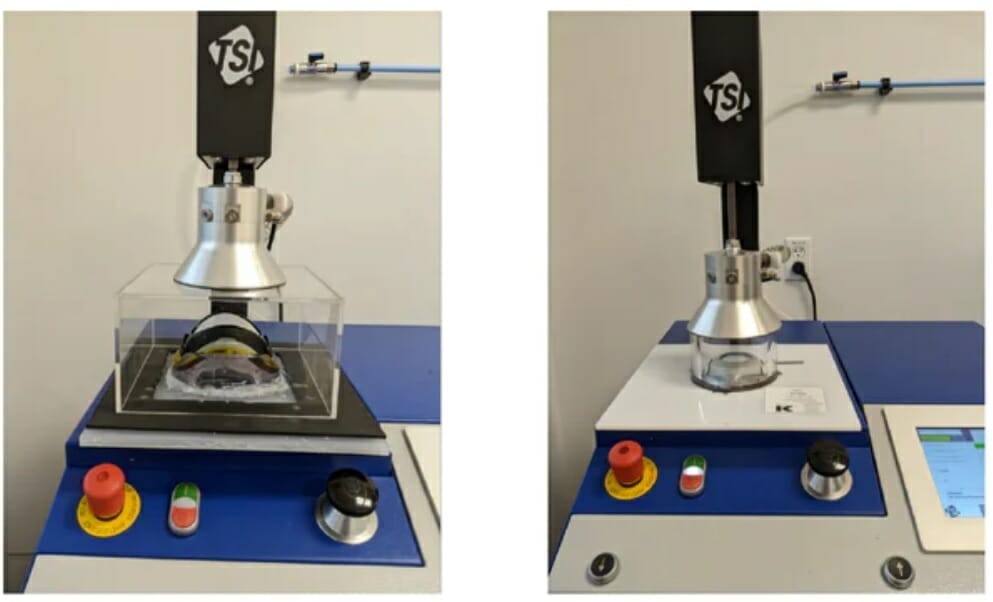
Image from 4C Air Flo Mask Report
While a high level of filtration is vital to ensure a mask can protect you, it’s important first to ensure a mask fits you without leaks. Too often, people get hung up on looking for the highest filtration masks and respirators. However, fit comes first because filtration is largely irrelevant unless a mask provides a good seal.
That said, filtration is still crucial as it shows the performance you can expect from a well-fitted mask without leaks. So, let’s take a look at how the Flo Mask performs when it comes to both filtration performance and the certifications the mask holds.
It’s important to note that Flo Mask has no official approvals or certifications at the time of writing. This means that it isn’t currently certified by NIOSH or according to any other international standard. However, I’ve been told by Kevin (the founder and CEO of Flo Mask) that FFP2 and N95 certifications are in the works.
For now, though, the mask remains without certifications. Luckily, as part of the Mask Innovation Challenge, all masks were tested under the conditions set by 42 CFR 84 – the same standard used to test N95 devices.
All the test results from NIOSH and NIST (National Insitute of Standards and Technology) are available on Flo Mask’s website in the form of a YouTube video. I am pleased to see the company being so transparent with its test results, and I believe this practice should be commonplace among all mask manufacturers.
I’ve embedded the video below, but I will go on and discuss the results found in the video after. If you prefer to consume video content, please watch the video below. If you’d prefer to read, continue on!
Flo Mask has two filter options – the Pro Filter and Everyday Filter. These filters differ in breathability and filtration, and the Pro Filter offers higher filtration at the cost of breathability. The Everyday Filter sacrifices some filtration but is vastly more breathable.
NIOSH testing was only performed on the Flo Mask with a Pro Filter inserted. If Flo Mask does gain an N95 certification in the future, it will likely only be with the Pro Filter, as the Everyday Filter does not currently meet the test requirements for N95 (more on that soon!).
From NIOSH’s testing, the Flo Mask with a Pro Filter inserted showed ≥ 98.73% filtration across three samples. Furthermore, across the three samples, a pressure drop of ≤ 15.66mmH2O was observed. These tests were carried out at a flow rate of 85 litres per minute.
These filtration results show the mask performing significantly in excess of the 95% requirement for a respirator to attain N95 approval. However, they are shy of the 99% required for N99 approval, which is the next tier above N95.
While 98.73% filtration might not seem fantastic, it’s important to remember that the NIOSH test conditions are the most stringent. While some masks, such as Cambridge Mask, may seemingly perform better regarding filtration, they are tested with the ASTM F2299 standard – a less challenging particle filtration standard.
Therefore, the results achieved by Flo Mask with a Pro Filter inserted are more impressive. Regarding filtration, these tests allow me to trust my Flo Mask to perform well, and the test results back this. However, how does the mask compare when it comes to breathability?

With a pressure drop of around 15.5mmH2O average on the Pro Filter, breathability wearing a Flo Mask is not great, but also not terrible. Compared to many popular N95 filtering facepiece respirators, the breathability is slightly worse. However, it’s well within the requirements of NIOSH, and most users shouldn’t have difficulty breathing in a Flo Mask.
If you find the pressure drop of the Pro Filter too great, you can use the Everyday Filter instead. As the name suggests, the latter is designed for everyday use and has better breathability, albeit at the cost of lower filtration.
As I mentioned previously, only the Pro Filter was tested by NIOSH. To compare how the Everyday Filter compares, Flo Mask has provided further lab testing from 4C Air – a third-party pre-submission testing facility for the NIOSH standards. These further tests were carried out per the NIOSH standards (TEB-APR-STP-0059, TEB-APR-STP-0003 and TEB-APR-STP-0007).
4C Air found the Pro Filter to have ≥ 99.16% filtration and ≤ 17.1mmH2O. These results are very similar to the NIOSH results and confirm them further. However, more interesting is that 4C Air also tested the Everyday Filter and found them to have ≥ 94.81% filtration and, more importantly, ≤ 5.99mmH2O breathing resistance.
| Filter | Flow Rate | PFE | Breathing Resistance* |
|---|---|---|---|
| Pro Filter | 85 | 99.16 | 17.1 |
| Everyday Filter | 85 | 94.81 | 5.99 |
| Everyday Filter | 32 | 99.12 | 2.1 |
4C Air also included a third test result showing the performance of the Everyday Filter at a flow rate of 32 litres per minute. This is an interesting addition because while NIOSH requires masks to be tested at 85Lpm, this is a flow rate we only see under very heavy exertion. Typically, adults have a resting minute ventilation rate of 6-8Lpm, increasing to 40-60Lpm with moderate exercise.
Therefore, while the Pro Filter exhibits significantly better filtration performance at a high flow rate (which you’ll only see when exercising), during most daily activities, you’ll still see > 99% filtration with the Everday Filter. Perhaps more importantly, at these lower flow rates, the Everyday Filter has an impressively low pressure drop.
If you are purchasing a Flo Mask, I highly recommend buying some Everyday Filters. While the breathing resistance with the Pro Filters is far from bad, the Everyday Filters provide a vast improvement. Seriously, it almost feels like you aren’t breathing through a filter.
Furthermore, it’s nice to have the flexibility of choice. If you’re looking for the best protection, insert a Pro Filter. However, if you’re in low-risk environments, you can swap to an Everyday Filter and still receive a high level of protection while losing a lot of breathing resistance.
So, how does Flo Mask compare? If I had to pick the two closest competitors to the Flo Mask, I would likely pick the Envo Mask and ElastoMaskPro. Both of these masks are certified N95 elastomeric respirators – the Envo Mask is a quarter-face respirator (similar to Flo Mask), while the ElastoMaskPro is a half-face respirator.
| Mask | Certification | PFE | Breathing Resistance |
|---|---|---|---|
| Flo Mask (Pro) | N/A | ≥ 98.73% | 15.5mmH2O |
| Flo Mask (Everyday) | N/A | ≥ 94.81% | 5.99mmH2O |
| Envo Mask | N95 | ≥ 97.44% | 16/8.8mmH2O* |
| ElastoMaskPro | N95 | NA (≥ 95%) | 3-4mmH2O |
Compared to Envo Mask, the Flo Mask with Pro Filters compares favourably. Not only is the filtration performance slightly better on the latter, but the breathability is slightly better, too. However, compared to ElastoMaskPro, the Flo Mask with Pro filters has around three times more pressure drop, meaning the ElastoMaskPro is vastly easier to breathe through.
If you opt for the Everyday Filters instead, you will still see good filtration but with much-improved breathability. However, unlike the Pro Filters, the Everyday Filters cannot be approved N95 in the future as they don’t have the ≥ 95% filtration required. Therefore, in theory, the Pro Filters perform better (and they will be the filters that get certified in the future), but at the lower flow rates at which we breathe, the Everyday Filters may be the better choice.
Fit

Fit is where Flo Mask excels, which is why customers highly recommend the mask. If you’ve never tried an elastomeric respirator before, you might not be familiar with the benefits a plastic or silicone seal brings. If this includes you, please refer to my article on half-face respirators, where I discuss the benefits of elastomeric respirators.
Needless to say, these respirators almost always provide a better fit and seal than standard filtering facepiece respirators. Even the best-fitting disposable respirators, such as the 3M Aura, generally can’t provide a fit as good as an elastomeric device.
Flo Mask is a quarter-face device similar to Envo Mask. This means it is smaller and lower profile than most elastomeric respirators, which are half-face (often called half-mask). However, quarter-face masks sit on your chin rather than cupping it like a half-face device.
This means quarter-face products tend to be a bit more susceptible to moving when the wearer is talking or moving and generally don’t provide as good of a fit. On the other hand, they have the benefit of being lower-profile and are generally easier and more comfortable to wear.
Flo Mask has two sizes which are identical except for the nose bridge size. The sizes are low/med and med/high, and according to Flo Mask, these masks should fit 90% of the world’s population. While I can’t verify this claim, I can say that the low/med mask fits me well.
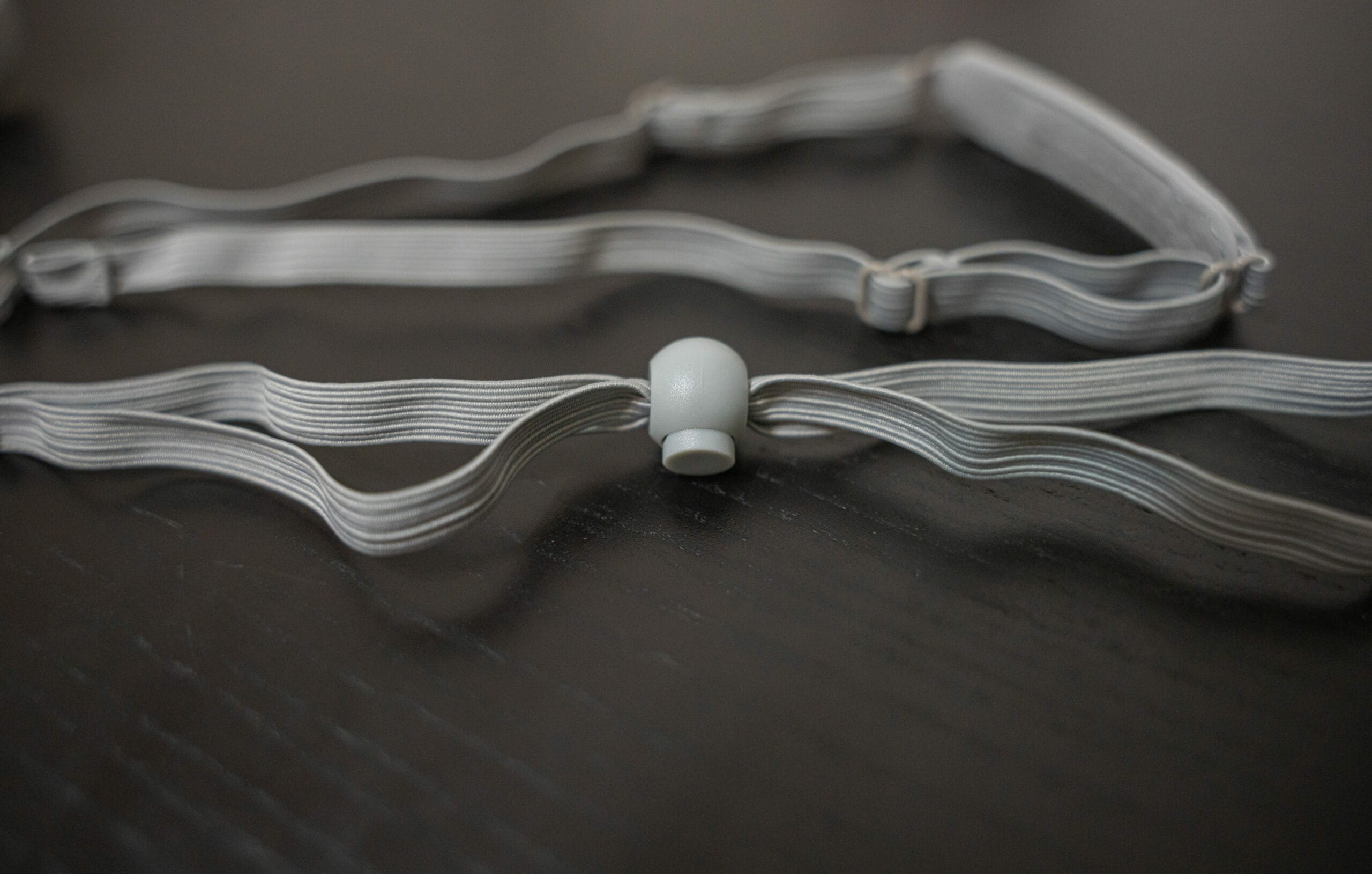
The mask is secured to the wearer’s face with two headbands. The top headband is designed to sit at the top back of the wearer’s head, while the lower band should sit around the top of your neck. Unlike many masks and respirators, the two bands are separate pieces which are individually mounted to the mask.
Both the top and bottom bands are adjustable. The top band takes some time to adjust, but once it’s fitted correctly, you shouldn’t need to adjust it often. Furthermore, any additional adjustments will likely be minor and quick to fix.
The bottom band has a toggle which sits behind your neck. Where the top band will not be adjusted much, the bottom band instead uses a toggle as it is designed to be regularly adjusted. When donning the mask and when taking the mask off, you’ll need to adjust the lower band.
The elastic bands used are high-quality and feel secure. Considering the low weight of the mask, these bands are more than capable of keeping the mask secured in place. Since they’re wide, they’re also comfortable – but more on that later!
A minor issue I noticed with the headbands was that the upper headband would often slip down my head over time. This was a quick and easy adjustment, but you will see in some of the images the top headband sits only level with my ears. This is because it tended to slip down my head during wear.
When it comes to the seal itself, Flo Mask uses a silicone gasket similar to many elastomeric masks and respirators. The silicone seal is soft and can easily be adjusted to fit various different faces, and the first time I donned the mask, I quickly found it to provide a good fit. While I had some leaks around where the top headband connects to the mask, these were mostly fixable with some headband adjustments.

After these adjustments, I found that my Flo Mask had no leaks when I wore it while sitting or otherwise inactive. When I was lightly active (such as when going for a walk), I found the mask to leak from time to time. This wasn’t a big issue as the leaks would quickly seal themselves, but I would notice them as my glasses would temporarily fog.
These leaks were minor (they would last only for a breath or two), but they are something I don’t experience on most half-face respirators. I’ve experienced similar issues with other quarter-face respirators, and I believe it is just an issue with the smaller seal size on these products.
With that said my Flo Mask generally fit very well. I experienced almost no leaks for day-to-day wear once I experimented with fitting the mask and found what worked best for me. Even when lightly active, I would still trust the mask as the leaks were minor, infrequent and (I believe) only on exhalation.
I will still opt for a half-face respirator when I need the best protection. They are generally certified P100 (depending on the cartridges used) and provide a more secure seal. That said, I steer clear of half-face respirators for general use as they are too heavy and uncomfortable. In these situations, the Flo Mask is a perfect middle-ground.
Comfort
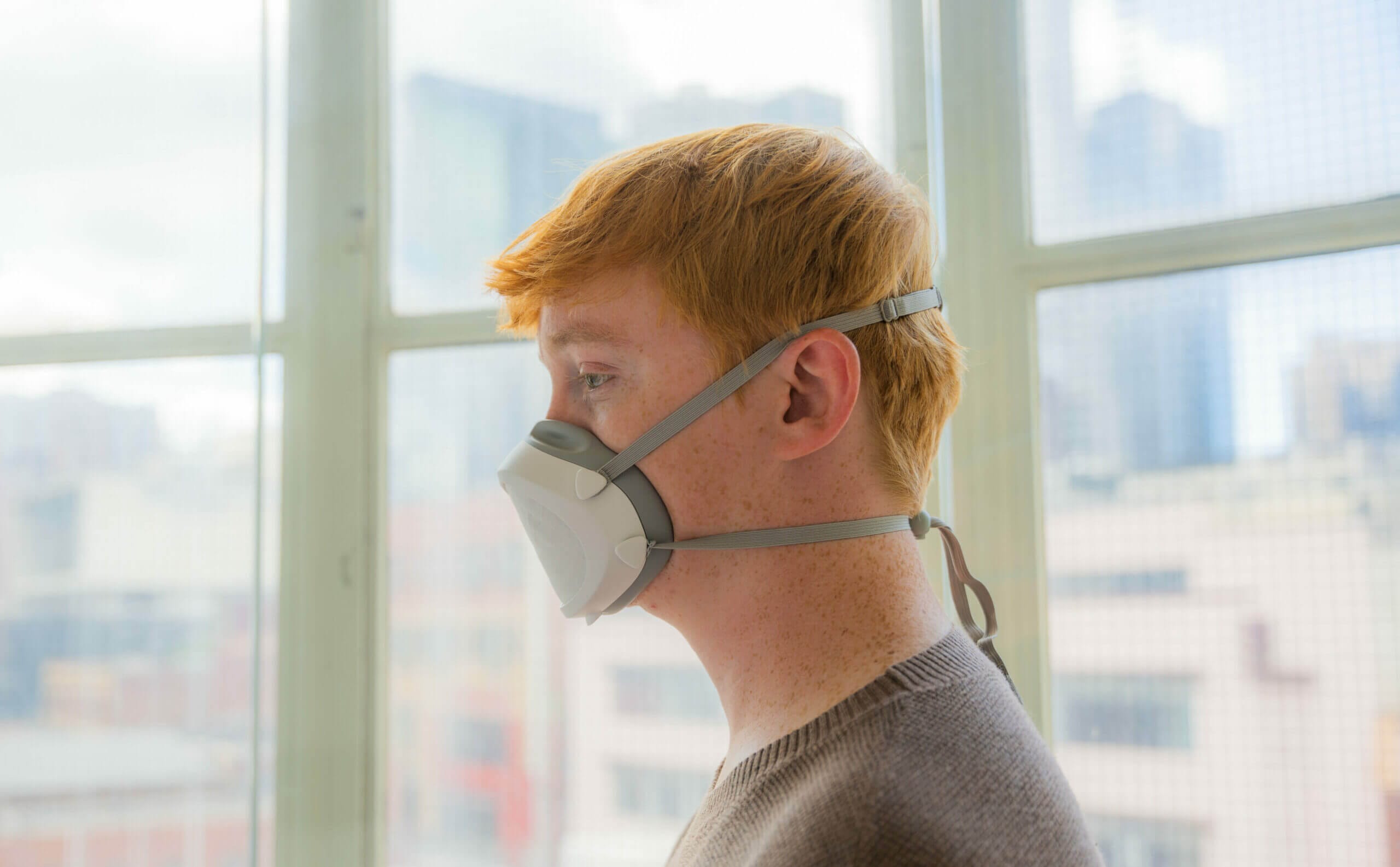
Although Flo Mask’s fit isn’t quite as good as a half-face respirator, it provides a significant improvement when it comes to comfort. The Flo Mask is also more comfortable than many filtering facepiece respirators and disposable masks.
Now, for this section, I feel like I need to split the Flo Mask into two separate categories. The comfort difference between the Pro Filter and Everyday Filter is significant. While the Pro Filter is far from uncomfortable, the Everyday Filter is a much better experience – at least regarding comfort.
The most important pillar of comfort is breathability, and that is where these two filters differ. The Pro Filter is comfortable, but you’ll still feel like you are wearing a mask. I never had any difficulty breathing with the Pro Filter, but you will never forget that you’re breathing through a mask.
The Everyday Filter, on the other hand, lets you forget. With a pressure drop of 2mmH2O, the Flo Mask with Everyday Filters at low flow rates is similarly as breathable as ElastoMaskPro and Airgami, two masks I recently praised for having incredible breathability. Let’s say this: the breathability of the Everyday Filters is nothing short of amazing – especially considering the mask doesn’t use a valve.
Regarding other comfort aspects, Flo Mask continues to perform well. The headbands are flat and thick enough that they distribute weight well. Of course, since the mask relies on headbands instead of earloops, you don’t need to worry about having sore ears after a few hours.
I recently wore my Flo Mask on a six-hour flight, and I had it donned for around 10 hours that day. I never felt any major discomfort and was happy to wear the mask throughout my trip. I made this trip with Pro Filters and was impressed with the mask’s overall comfort.
Moving on from the headbands, I also found the seal comfortable. While I initially had some fitting issues with the seal, the same can’t be said for comfort. The materials are soft, and my skin (which is very sensitive) didn’t have any reactions or irritations from the materials used.
Even after wearing the mask for hours on a hot day, I didn’t find it overly uncomfortable. These are situations in which all masks become uncomfortable, and the Flo Mask performed surprisingly well, especially considering it is an elastomeric respirator.
Naturally, condensation will build up inside the mask, but it never caused me an issue. Flo Mask includes an optional foam strip that can be inserted into your mask to help with absorption, but I never found using the foam necessary. However, it is included if you find the condensation uncomfortable.
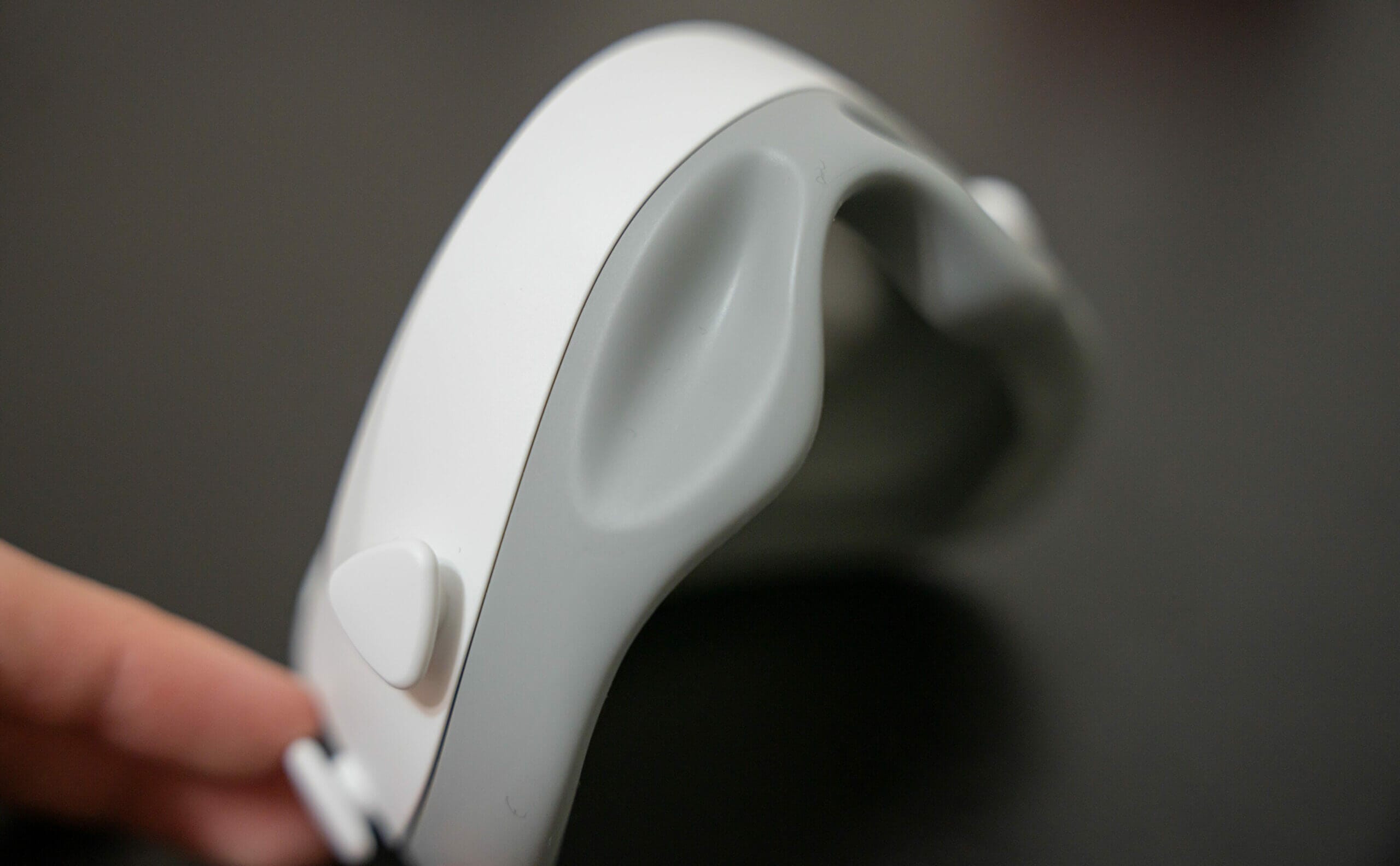
Besides the occasional minor leaks I mentioned in the fitting section, the Flo Mask was a great mask to wear with glasses. Fogging is minimal and generally only occurred from time to time when I was active. My glasses also fit very well, as the two inserts at the top of the mask fit my glasses perfectly. If you wear glasses, the Flo Mask might be the perfect match!
Another aspect I appreciate about the Flo Mask is the relatively small form factor. It’s similar in shape to Envo Mask but sits much flatter than masks such as Gill Mask and AirHead Mask. Furthermore, it’s not unwieldy like most cartridge-based half-face respirators.
The mask is also very light and is by far one of the lightest elastomeric masks on the market. This makes it an overall comfortable package, and nothing protrudes from the mask, adding unnecessary weight or inconvenience.
The Flo Mask is comfortable compared to elastomeric respirators and disposable masks alike. With Everday Filters, it’s one of the most breathable masks I’ve tried. However, even with Pro Filters, I found the Flo Mask comfortable, and I would recommend it for anyone who needs to wear a mask for long periods of time.
Cost & Lifespan

This brings us to one of Flo Masks’ biggest strengths and its biggest weakness – Lifespan and price. The Flo Mask is far from cheap, and you’ll pay $89.99 for the Flo Mask Pro. Furthermore, if you are located outside the U.S., you may find the shipping cost significant.
To get the mask shipped to New Zealand, I paid an extra $35, making the total price $124.99, and I have to admit I questioned whether the purchase was worth it. Ultimately, I went through with the purchase because I had heard so many glowing reviews about the product.
However, the price, unfortunately, puts the mask out of reach for many. While it’s not uncommon for masks to be this expensive – Envo Mask and ElastoMaskPro are similarly priced – I always hope for cheaper alternatives.
While the large price creates a barrier to entry, the ongoing costs of using a Flo Mask will make it much cheaper than disposable masks. Replacement filters cost $60 for a pack of 50 (there are no other bundle sizes), and each filter has the same lifespan as a typical disposable mask.
Therefore, if you choose to invest in a Flo Mask, you will see it come out cheaper in the long run. However, becoming a good value proposition will take a while. The good news? Provided your Flo Mask is cared for, it should last indefinitely.
As I mentioned previously, I’ve been using my mask for around two months, and I haven’t encountered any durability issues or issues that make me worry about the longevity of the mask.

Luckily, if part of the mask becomes damaged or breaks, replacement parts can be purchased on Flo Mask’s website. If you need a new headband, front cover, or mask body, these can be purchased individually for a cheaper price than a new mask outright.
So, would I recommend this mask, considering the price? If you can afford it, yes. It’s a solid mask and one that is bound to last you for years. While it is expensive, the unfortunate reality is that these smaller companies can’t produce masks for the low cost of companies such as 3M.
If you are looking for a cheaper alternative with many similar strengths, I recommend the Gill Mask or Gill Mask Pro. However, Flo Mask has the advantage of being more breathable (with the Everyday Filter) and will hopefully soon be certified for use in Europe and the U.S.
Conclusion

Overall, I’ve had a good time using my Flo Mask. It’s one of the most comfortable quarter-face respirators I’ve tried, and it is definitely more comfortable than half-face respirators. The best part? It carries over many of the strengths of its larger counterparts.
While the fit isn’t quite as great as the larger respirators and filtration isn’t quite as good (since most half-face respirators are a minimum of N100), Flo Mask is vastly more comfortable and easier to wear. Unlike nearly all half-face respirators, this is a mask I am happy to wear daily.
If you’re looking to ‘upgrade’ from a cloth mask or disposable respirators, the Flo Mask is an accessible way to do so. When I moved from disposable to half-face respirators, I found the change took a long time to get used to. However, I believe Flo Mask is a much better step up as the change is less (but still big), and the performance is a big improvement.
Flo Mask isn’t perfect, and the seal would sometimes leak when I was active. However, I’ve found this to be common with quarter-face devices, and it’s not an issue exclusive to Flo Mask. This wasn’t a deal breaker for me, but your mileage may vary, and you may find the mask fitting significantly better or worse.
So, that brings us to the big question: Would I recommend it after two months of wearing a Flo Mask? The quick answer is if cost isn’t an issue, yes. If you can justify the almost $100 price tag of the mask, it’s a quality product that should easily last a couple of years. Over this time, it will become not only cheaper but will also be more environmentally friendly than disposable masks.
While there are cheaper alternatives, the masks that I believe Flo Mask most closely competes with are all similarly priced. While there are some cheaper elastomerics, such as Stealth Mask and Gill Mask, I found both of these masks to have bigger downsides than Flo Mask.
Flo Mask FAQ
Is Flo Mask Certified?
Currently, it is not. However, FFP2 and N95 approvals are currently in progress.
Has Flo Mask Been Lab Tested?
Yes. NIOSH, NIST, and 4C Air have tested Flo Mask.
What Is the Difference Between Flo Mask Filters?
The Pro Filter has better filtration but lower breathability, whereas the Everyday filter has lower filtration but improved breathability.
What Filter Is Better?
The Pro Filter is the best choice for air pollution and high-risk situations. For other situations, the Everyday filter is likely good enough.
Where Can I Buy Flo Mask?
You can purchase it from Flo Mask’s website.
What Alternatives Are There to Flo Mask?
The closest competitors are Envo Mask and ElastoMaskPro.
Have Questions or Comments?
Join the discussion on the BreatheSafeAir Community Forum. Ask any questions you have about air quality or adjacent topics and get quick answers!
Flo Mask
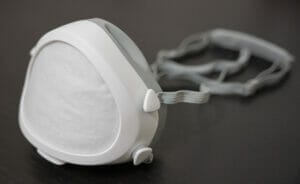
Flo Mask is an elastomeric quarter-face mask that is designed to provide the perfect balance of comfort and performance. As a runner up in the Mask Innovation Challenge, the Flo Mask is a promising device worth a look.
Product Brand: Flo Mask
4
Pros
- High filtration
- Good seal
- Glasses-friendly
- Replacement parts available
- Affordable replacement filters
- Easy to don
- Comfortable
- Flexible with different filter types
Cons
- Expensive
- Not as breathable as some alternatives
- Can leak when exercising
I’ve been using the Flo Mask for over 3 months. I mirror all the experiences reflected in the Ethan Brooke’s review, except for 1 con: the condensation issue. I find the build-up inside the mask to be uncomfortable, wet, and itchy (even using the foam insert; even supplementing it with Swedish dish cloth strips). The mask causes major skin disruptions for me (cystic acne — which I’ve never had before).
I would add that one should spring for the halo headband. It is an alternate upper head band that does not slip.
Hey, thank you so much for taking the time to write this and your other reviews. I’m in Mexico City, a highly populated and polluted city. I’m debating whether or not to get the flo mask, the gill mask, or something else. I’ve been using handmade cloth masks with three layers of percale cotton fabric and 3M respirators. I take public transportation and box once or twice a week outdoors. I’m hoping to cut down on waste that disposable masks generate without having to compromise on filtration quality and hopefully at a sustainable price point (the Mexican peso is about 20 to 1 USD). I’ve also had an injury on my cheek that can make wearing some masks painful after extended use. What do you think? Do you have any advice or mask recommendations that I could look into? Thank you for reading this!
Hi Michelle,
I’m sorry to hear your having such difficulty finding a mask. I hope I can help provide some insight, though!
While I can’t say for sure which masks will become painful due to your injury, I would guess that Flo Mask, Envo Mask, or ElastoMaskPro would be your best bets. If the injury is closer to your nose, the ElastoMaskPro might be a good choice, as it’s a half-face respirator that seals further back. However, if the injury is closer to your ears, Flo Mask or Envo Mask are likely better as they are smaller masks with smaller seals. With that said, the Envo mask has some durability issues, so I would lean towards the Flo Mask.
Please let me know if you have any other questions!
Hi Ethan,
Thank you so much for your thoughtful reply! Since my injury is close to my nose, I’m thinking of going with the ElastoMaskPro. On a superficial note, you wouldn’t happen to know of a similar sealing mask with the specifications of the EMP (or close to it) with a slightly more discrete profile? I’m willing to sacrifice aesthetics for protection, but if there’s one that doesn’t look like a Bane cosplay, I’m also interested 😅
Thank you again!
Michelle
Hi Michelle,
You’re welcome! I’m glad I could help.
The EMP is a great product; if that’s what you end up with, I believe you will find it performs well. However, I can understand your concern regarding looks! Unfortunately, I don’t believe there are any better looking/lower profile options. There are quarter-masks such as Flo Mask, but these don’t seal as well due to their smaller size. If you’re willing to sacrifice some fit, there are a few more options out there!
The smaller masks (such as quarter-masks) still provide a much better fit than filtering facepiece respirators, but they do often get dislodged or get a broken seal when speaking, coughing, or yawning. On the other hand, most half-masks (such as EMP) can retain a seal through these actions. If you’re careful with quarter masks, they can still provide a similar level of protection. However, you might find yourself altering some of your actions (speaking more quietly, so your mouth moves less, for example).
Is this trade-off acceptable to you?
Hi, so on balance, it seems you prefer the Flo over the Envo? Any additional pros/cons between the 2? Also, I’m not able to see how many hours the Envo’s filters are good for? Thanks so much!
Hi Cynthia,
I would say I slightly prefer the Envo Mask; however, it has a glaring durability issue. I recommend the Flo Mask because it’s a great mask that is a safe recommendation… On the other hand, the Envo Mask I slightly prefer (it fits me better and creates a great seal), but it’s hard to recommend because it may break within six months.
Technically speaking, Envo Mask’s filters should only be used for around 8 hours (the standard usage period for any N95 respirator). Realistically, though, you can use them for much longer. However, I wouldn’t use a filter for longer than a working week.
Between the two, I would sum up the advantages as follows:
Envo Mask
– Approved N95
– Slightly better seal
– Slightly more comfortable
– More comfortable headband
– Fit seems more secure
Flo Mask
– Better flexibility (the Everyday Filter is great)
– Likely higher filtration on the Pro Filter (although Envo Mask hasn’t published its filtration results outside of > 95%)
– More durable
– Looks better (IMO)
– Fits me better with glasses
Hey Ethan!
Thank you for your thoughts, I think they confirm that the EMP is the best choice for my needs. I already have sealing problems with cloth masks, and I speak quietly enough that I have to speak up regularly, so doing that even more than I already do would be very annoying. Thank you so much, I’ll let you know if I have any other questions